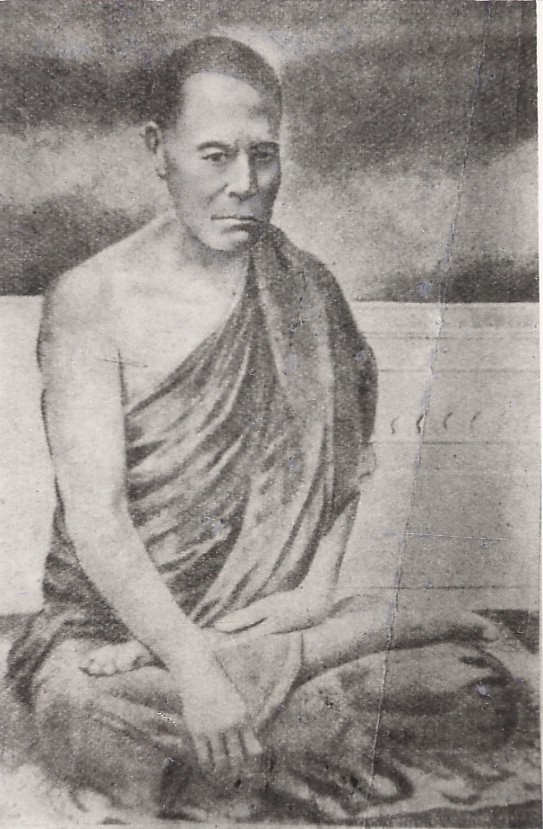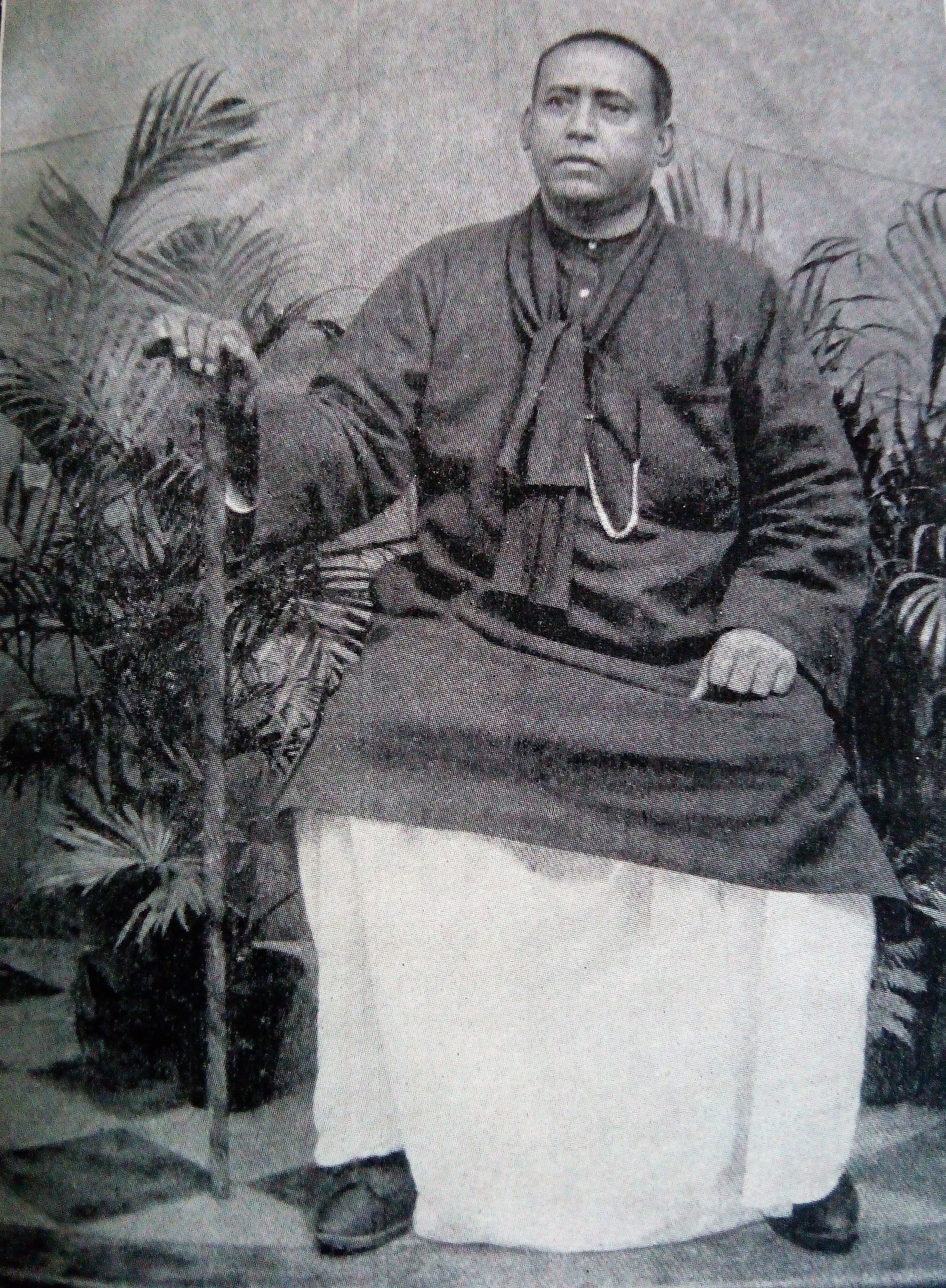|
Palitpur
Palitpur is a village in Burdwan I CD Block in Bardhaman Sadar North subdivision of Purba Bardhaman district in West Bengal, India. It is famous for the ashram and samādhi (tomb) of Tibbetibaba, a famous saint. Geography Palitpur is located in Saraitikar Panchayat area of Burdwan-I Block and it falls within the jurisdiction of Burdwan Sadar (North) Sub-Division of Bardhaman district.http://209.85.175.104/search?q=cache:kqwMUm1hOaoJ:www.wbphed.gov.in/applications/Phedweb/Block2Villpdf.php%3FState_Cd%3D19%26Dist_Cd%3D09%26Blk_Cd%3D0022+palitpur,burdwan&hl=en&ct=clnk&cd=5&gl=in It is a small village located near the northern part of Burdwan town. On the eastern part of the village is the narrow gauge railway track between Katwa and Burdwan. There is also an unmanned level crossing at Palitpur in Burdwan. Demographics As per the 2011 Census of India, Palitpur had a total population of 2,089 of which 1,042 (50%) were males and 1,047 (50%) were females. Population below 6 ye ... [...More Info...] [...Related Items...] OR: [Wikipedia] [Google] [Baidu] |
Tibbetibaba
Tibbetibaba also known as Mahasadhak Tibbetibaba or Paramhamsa Tibbetibaba, alternative spellings Tibbatibaba, Tibbati Baba, Tibbeti Baba, Tibbotibaba or Tibboti Baba ("Tibetan Baba" or the Monk from Tibet, when translated into English.) born Nabin Chattopadhhyaya bn, নবীন চট্টোপাধ্যায়;Mahasamadhi or death – 19 November 1930) was a famous Bengali philosopher, saint and yogi. He was one of the few saints in India whose life was an amalgamation of the Advaita Vedanta doctrine of Hinduism and Mahayana Buddhist doctrine. Tibbetibaba was a master of all the eight ''siddhis'' and supposedly had remarkable healing powers. Even though he was master of all the ''siddhis'', he was not personally interested in using them. Biography There were many incidents and events that had taken place in the life of Tibbetibaba (died 19 November 1930). Many events have been recorded in writing by his devotees and disciples and some have not been recorded. Broa ... [...More Info...] [...Related Items...] OR: [Wikipedia] [Google] [Baidu] |
Soham Swami
Soham Swami (also known as "Tiger Swami," Sohong Swami, Parmahangsa Soham Swami or Sohom Swami, Bengali: শ্রীমৎ পরমহংস সোহংস্বামী ) was a Hindu guru and yogi from India. Originally named as Shyama Kanta Bandopadhyay, he was the disciple of the Advaita Vedantist Tibbetibaba. Tibbetibaba was a great yogi and guru of India. Soham Swami was born as Shyama Kanta Bandopadhyay at Adial, a small village in Bikrampur district in the Bengali month of Jaishthya in 1858 and was one of the pioneers of physical prowess of modern Bengal. He had so much physical strength that he could wrestle even tigers. He was known to the public, both Indian and European, as Professor Banerjee, the first tiger tamer of India, and to his admirers in Bengal as BaghaShyamakanta. These tiger bouts took place before he entered into the spiritual path.Yogananda, Sri Sri Paramahansa, ''Autobiography of a Yogi'', Yogoda Satsang Society of India (1997) . p.49 and 57 Soh ... [...More Info...] [...Related Items...] OR: [Wikipedia] [Google] [Baidu] |
States And Territories Of India
India is a federal union comprising 28 states and 8 union territories, with a total of 36 entities. The states and union territories are further subdivided into districts and smaller administrative divisions. History Pre-independence The Indian subcontinent has been ruled by many different ethnic groups throughout its history, each instituting their own policies of administrative division in the region. The British Raj mostly retained the administrative structure of the preceding Mughal Empire. India was divided into provinces (also called Presidencies), directly governed by the British, and princely states, which were nominally controlled by a local prince or raja loyal to the British Empire, which held ''de facto'' sovereignty ( suzerainty) over the princely states. 1947–1950 Between 1947 and 1950 the territories of the princely states were politically integrated into the Indian union. Most were merged into existing provinces; others were organised into ... [...More Info...] [...Related Items...] OR: [Wikipedia] [Google] [Baidu] |
Burdwan
Bardhaman (, ) is a city and a municipality in the state of West Bengal, India. It is the headquarters of Purba Bardhaman district, having become a district capital during the period of British rule. Burdwan, an alternative name for the city, has remained in use since then. Etymology The history of Burdwan is known from about 5000 BC (the Mesolithic or Late Stone Age). The origin of this name dates back to the sixth century BCE and is ascribed to Vardhamāna or Mahāvīra (599-527 BCE), the 24th Tīrthāṅkara of Jainism, who spent some time in Astikagrama, according to the Jain scripture of Kalpa Sūtra. This place was renamed as ''Vardhamana'' in his honour. History During the period of Jahangir this place was named Badh-e-dewan (district capital). The city owes its historical importance to being the headquarters of the Maharajas of Burdwan, the premier noblemen of lower Bengal, whose rent-roll was upwards of 300,000. Bardhaman Raj was founded in 1657 by Sangam Rai, of ... [...More Info...] [...Related Items...] OR: [Wikipedia] [Google] [Baidu] |
Samādhi
''Samadhi'' (Pali and sa, समाधि), in Buddhism, Hinduism, Jainism, Sikhism and yogic schools, is a state of meditation, meditative consciousness. In Buddhism, it is the last of the eight elements of the Noble Eightfold Path. In the Ashtanga (eight limbs of yoga), Ashtanga Yoga tradition, it is the eighth and final limb identified in the ''Yoga Sutras of Patanjali, Yoga Sutras'' of Patanjali. In the oldest Buddhist sutra, suttas, on which several contemporary western Theravada teachers rely, it refers to the development of an investigative and luminous mind which is Upekkha, equanimous and mindful. In the yogic traditions, and the Buddhist commentarial tradition on which the Burmese Vipassana movement and the Thai Forest Tradition, Thai Forest tradition rely, it is interpreted as a meditative absorption or trance, attained by the practice of ''Dhyāna in Buddhism, dhyāna''. Definitions ''Samadhi'' may refer to a broad range of states. A common understanding regards ... [...More Info...] [...Related Items...] OR: [Wikipedia] [Google] [Baidu] |
Ashram
An ashram ( sa, आश्रम, ) is a spiritual hermitage or a monastery A monastery is a building or complex of buildings comprising the domestic quarters and workplaces of monastics, monks or nuns, whether living in communities or alone (hermits). A monastery generally includes a place reserved for prayer which ... in Indian religions. Etymology The Sanskrit noun is a thematic nominal derivative from the root 'toil' (< Proto-Indo-European, PIE *''ḱremh2'') with the prefix 'towards.' An ashram is a place where one strives towards a goal in a disciplined manner. Such a goal could be ascetic, spirituality, spiritual, yogic or any other. Overview  An ashram wo ...
An ashram wo ...
[...More Info...] [...Related Items...] OR: [Wikipedia] [Google] [Baidu] |
Zamindar
A zamindar ( Hindustani: Devanagari: , ; Persian: , ) in the Indian subcontinent was an autonomous or semiautonomous ruler of a province. The term itself came into use during the reign of Mughals and later the British had begun using it as a native synonym for “estate”. The term means ''land owner'' in Persian. Typically hereditary, from whom they reserved the right to collect tax on behalf of imperial courts or for military purposes. During the period of British colonial rule in India many wealthy and influential zamindars were bestowed with princely and royal titles such as ''maharaja'' (great king), ''raja/rai'' (king) and ''nawab''. During the Mughal Empire, zamindars belonged to the nobility and formed the ruling class. Emperor Akbar granted them mansabs and their ancestral domains were treated as jagirs. Some zamindars who were Hindu by religion and brahmin or kayastha or kshatriya by caste were converted into Muslims by the Mughals. During the colonial era, the ... [...More Info...] [...Related Items...] OR: [Wikipedia] [Google] [Baidu] |
Soham Swami's Samadhi Temple At Palitpur, Burdwan
Soham ( ) is a town and civil parish in the district of East Cambridgeshire, in Cambridgeshire, England, just off the A142 between Ely and Newmarket. Its population was 10,860 at the 2011 census. History Archaeology The region between Devil's Dyke and the line between Littleport and Shippea Hill shows a remarkable amount of archaeological findings of the Stone Age, the Bronze Age and the Iron Age. A couple of hoards of bronze objects are found in the area of Soham, including one with swords and spearheads of the later Bronze Age as well as a gold torc, retrieved in 1938. A large Anglo-Saxon settlement was discovered on land between Brook Street and Fordham Road, next to Roman remains in the old Fisky's Hill area and former allotment site in 2013 and onwards. During the establishment of the Fordham Road cemetery, in the late 1800's, burial remains were also found with several high-status grave goods, including a girdle hanger, beads and Jewlery. These items are now housed i ... [...More Info...] [...Related Items...] OR: [Wikipedia] [Google] [Baidu] |
Scheduled Tribe
The Scheduled Castes (SCs) and Scheduled Tribes (STs) are officially designated groups of people and among the most disadvantaged socio-economic groups in India. The terms are recognized in the Constitution of India and the groups are designated in one or other of the categories. For much of the period of British rule in the Indian subcontinent, they were known as the Depressed Classes. In modern literature, the ''Scheduled Castes'' are sometimes referred to as Dalit, meaning "broken" or "dispersed", having been popularised by B. R. Ambedkar (1891–1956), a Dalit himself, an economist, reformer, chairman of the Constituent Assembly of India, and Dalit leader during the independence struggle. Ambedkar preferred the term Dalit to Gandhi's term, Harijan, meaning "person of Hari/Vishnu" (or Man of God). In September 2018, the government "issued an advisory to all private satellite channels asking them to 'refrain' from using the nomenclature 'Dalit'", though "rights groups and i ... [...More Info...] [...Related Items...] OR: [Wikipedia] [Google] [Baidu] |
Scheduled Caste
The Scheduled Castes (SCs) and Scheduled Tribes (STs) are officially designated groups of people and among the most disadvantaged socio-economic groups in India. The terms are recognized in the Constitution of India and the groups are designated in one or other of the categories. For much of the period of British rule in the Indian subcontinent, they were known as the Depressed Classes. In modern literature, the ''Scheduled Castes'' are sometimes referred to as Dalit, meaning "broken" or "dispersed", having been popularised by B. R. Ambedkar (1891–1956), a Dalit himself, an economist, reformer, chairman of the Constituent Assembly of India, and Dalit leader during the independence struggle. Ambedkar preferred the term Dalit to Gandhi's term, Harijan, meaning "person of Hari/Vishnu" (or Man of God). In September 2018, the government "issued an advisory to all private satellite channels asking them to 'refrain' from using the nomenclature 'Dalit'", though "rights groups and i ... [...More Info...] [...Related Items...] OR: [Wikipedia] [Google] [Baidu] |
Census
A census is the procedure of systematically acquiring, recording and calculating information about the members of a given population. This term is used mostly in connection with national population and housing censuses; other common censuses include censuses of agriculture, traditional culture, business, supplies, and traffic censuses. The United Nations (UN) defines the essential features of population and housing censuses as "individual enumeration, universality within a defined territory, simultaneity and defined periodicity", and recommends that population censuses be taken at least every ten years. UN recommendations also cover census topics to be collected, official definitions, classifications and other useful information to co-ordinate international practices. The UN's Food and Agriculture Organization (FAO), in turn, defines the census of agriculture as "a statistical operation for collecting, processing and disseminating data on the structure of agriculture, covering th ... [...More Info...] [...Related Items...] OR: [Wikipedia] [Google] [Baidu] |







